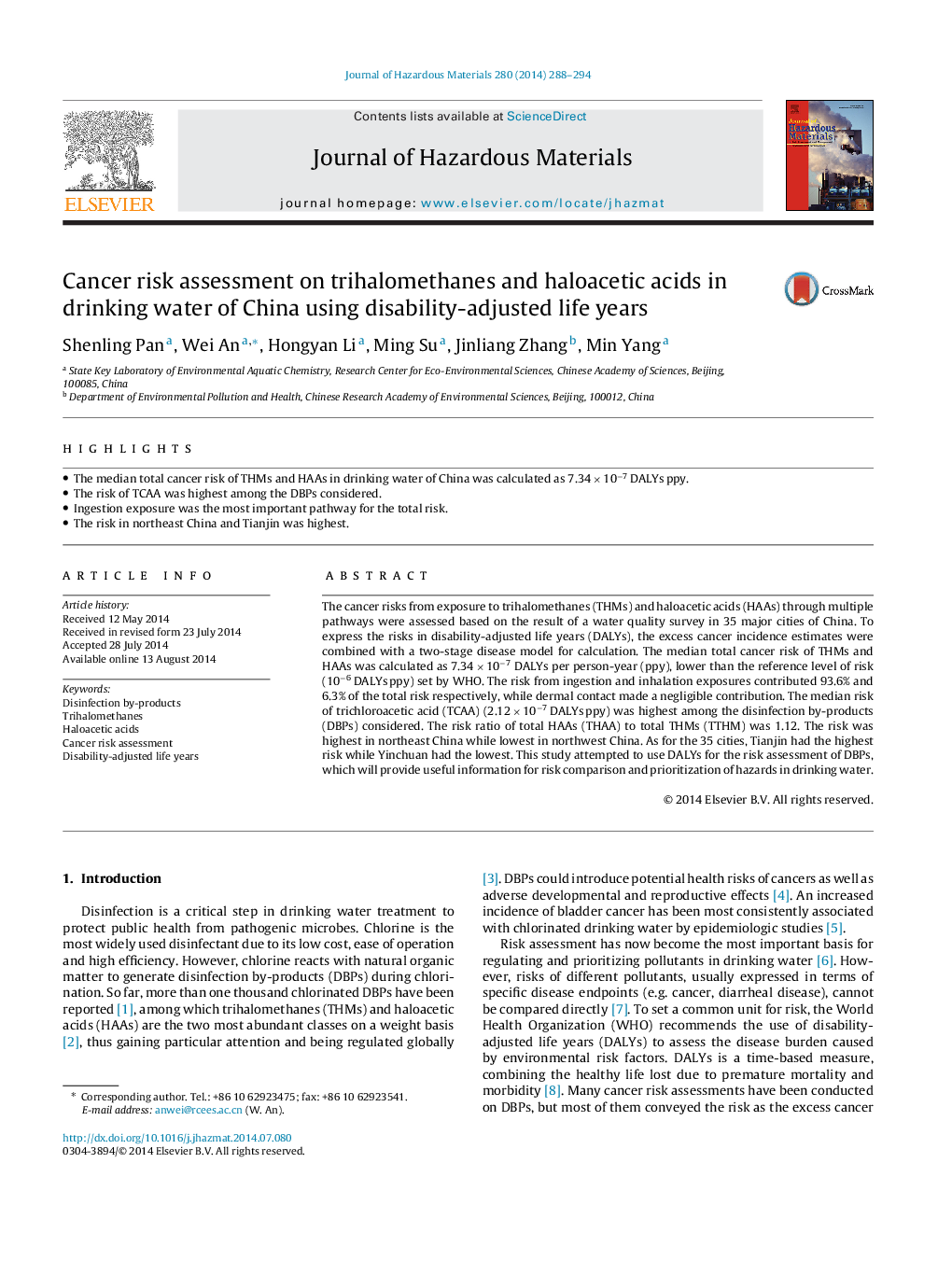| Article ID | Journal | Published Year | Pages | File Type |
|---|---|---|---|---|
| 6971413 | Journal of Hazardous Materials | 2014 | 7 Pages |
Abstract
The cancer risks from exposure to trihalomethanes (THMs) and haloacetic acids (HAAs) through multiple pathways were assessed based on the result of a water quality survey in 35 major cities of China. To express the risks in disability-adjusted life years (DALYs), the excess cancer incidence estimates were combined with a two-stage disease model for calculation. The median total cancer risk of THMs and HAAs was calculated as 7.34 Ã 10â7 DALYs per person-year (ppy), lower than the reference level of risk (10â6 DALYs ppy) set by WHO. The risk from ingestion and inhalation exposures contributed 93.6% and 6.3% of the total risk respectively, while dermal contact made a negligible contribution. The median risk of trichloroacetic acid (TCAA) (2.12 Ã 10â7 DALYs ppy) was highest among the disinfection by-products (DBPs) considered. The risk ratio of total HAAs (THAA) to total THMs (TTHM) was 1.12. The risk was highest in northeast China while lowest in northwest China. As for the 35 cities, Tianjin had the highest risk while Yinchuan had the lowest. This study attempted to use DALYs for the risk assessment of DBPs, which will provide useful information for risk comparison and prioritization of hazards in drinking water.
Keywords
Related Topics
Physical Sciences and Engineering
Chemical Engineering
Chemical Health and Safety
Authors
Shenling Pan, Wei An, Hongyan Li, Ming Su, Jinliang Zhang, Min Yang,
